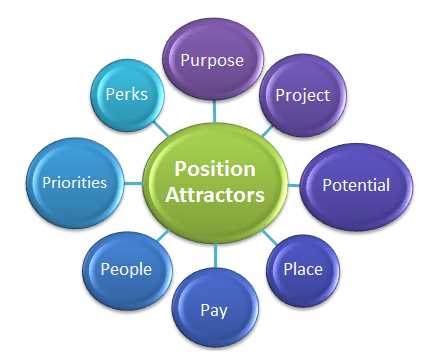By: Erica Woods | Comments (1) | Related: More > Professional Development Management
Problem
When we hear managers expressing frustration at the caliber or level of candidates they want for their open positions, one of the biggest issues stems from the quality of the job description, or lack thereof. It has always surprised me that a lot of job descriptions weren't created and customized for the opening at hand. I once had a very busy manager tell me to "Google to find a job description for the role he was hiring for" and that he would use that one. While everyone is extremely busy, the importance of spending 10 to 15 minutes to flush out an accurate representation for the job you're hiring for can't be stressed highly enough, especially if you want to find the right people for your role and team!
Solution
A very important note about job descriptions - not only do they need to include the skill sets and requirements you need a candidate to possess, but they need to provide details about the opportunity that candidates would be concerned with!
Keep these two very different job description goals in mind:
- Share information that would give enough of a picture of what the role truly entails and ignite some interest
- Outline the major requirements that you’d need someone to walk in the door with to be successful, putting any other qualifications that an ideal candidate would have under a separate list, such as “preferred qualifications”
Here is a model we have flushed out over the years for highlighting the main “position attractors” you should include in order to build really quality job descriptions!

When creating your job description, try to communicate each of these 8 Ps, which we also consider “information advantages!” Here are some questions you can ask yourself around these Ps:
- Purpose: What are the core values, mission, and macro level goals of the company and group? What are the key functions of this team? What is the primary purpose of this role? How will this role support the goals of the team, group, and/or company as a whole?
- Priorities: What are the top 3+ things you want this person to come in and accomplish over the next 3 months? 6 months? What are 5+ job functions? Job seeker studies have found that the average candidate wants to know 5-8+ specific responsibilities they’ll have!
- Project: What are the details on the project/s they’ll be working on? Size / scale, scope, phase and purpose?
- People: How large is your team and what are the dynamics (i.e. make up of roles and levels)? How would you describe the culture of the organization and team? What are the common traits amongst team members?
- Pay: Are there other aspects of compensation besides base/rate, such as profit sharing, bonuses, matching 401(k), etc.? Is it worth communicating the typical compensation trajectory for that type of role within your organization?
- Potential: Is there any learning, training, and/or growth potential? What technologies are required and what’s preferred? What technologies, tools, versions, platforms, approaches, or other skills will they get the opportunity to learn? Is there a potential to join any steering committee/s, programs such as ‘Emerging Leaders,’ or be a part of other fruitful efforts/programs?
- Place: Where do they fit within the organization? Title, team, group, reporting structure/chain, etc.? Also, what’s the physical place where they’ll be working like (i.e. facility)? Do they have any potential for remote work and/or a flexible schedule?
- Perks: What are all the technologies, versions and tools they’ll work with (i.e. complete technical landscape)? What technologies/versions/methodologies are pluses (Plus ? Perk)? Are there any other perks of working at the company, on this team, on this project, or at this facility that we should share with candidates we’re speaking with? Do you have a sandbox environment, offer MSDN or Pluralsight licenses, pay for certifications, host user group meetings at the venue, have free or discounted food/beverages, have onsite gym or daycare, etc.? What are the major benefits you offer and how strong are they? What’s your healthcare and 401(k) contribution look like? Do you have an HSA and/or FSA?
When writing descriptions, also keep in mind you can bullet point the key
information! Long paragraphs shouldn't be the answer when flushing out the 8Ps,
key responsibilities, requirements, and preferred qualifications.
Here’s
an example job description that includes key position attractors formatted using
an outline form/bullet points:
We have a full-time Team Lead role for new large-scale and high-visibility projects. Key details are below, but this Lead will oversee CMS (Sitecore) and CRM (MS Dynamics) services, working with the IT and business teams to create and implement a digital strategy to improve the web and mobile experiences for our customers.
Key Aspects of Lead .NET Developer
- Project Details: New migration effort from Sitecore CMS to new tool and integration with MS Dynamics CRM
- Salary Range: 135K base + 10% annual bonus + strong 401K match and benefits
- Tech Stacks: Asp.Net MVC 4.5, JavaScript, BootStrap, Angular, Sitecore, Dynamics, CSS3, HTML5, WebAPI, REST/RESTful Web Services, SQL Server 2016, SSRS
- Environment: Agile Scrum with 2 week sprints, Continuous Integration and Delivery
- Team: 12-member Software Engineering team with dedicated Scrum Master, 3 Jr Engineers, 3 mid-level Engineers, 3 Senior Engineers, Architect and Manager in a highly collaborative, open, laid back and fun-loving environment
- Additional Aspects: Strong growth potential (transition towards Solution Architect down the road), technical training (i.e. Pluralsight license), conference reimbursement (one a year), sandbox environment, and 10% of work time can be on Tech4Good or other personal initiatives that support growth
- Key Requirements: Leadership skills, continuous integration experience, and 5+ years .NET development
Responsibilities of Lead .NET Developer
- Working closely with business stakeholders to understand problems/opportunities and determine technical solutions that enable customers
- Working closely with business stakeholders to consult on priorities within Agile work streams
- Working closely with the development team to ensure technical architecture is well designed
- Writing code, configuring deployment scripts, writing unit/load tests
- Serving as an evangelist for technology and process
- Providing thought leadership around Agile process within the team and more broadly throughout the organization as we scale our footprint to an enterprise implementation
Requirements of Lead .NET Developer
- Passion for software craftsmanship
- Drive to understand and exercise emerging technology trends
- Ability to hear business strategy and solution
technical delivery
- Proven experience in “Agility”, including Kanban and Scrum
- Experience using and driving Continuous Integration/Delivery
- Experience in leading, managing and inspiring development teams
- Current (or
recent) experience in implementing content management systems (Sitecore) and/or
customer relationship systems (Salesforce or Microsoft Dynamics CRM)
- Current (or recent) experience in the .NET stack, with a focus on web technologies
Next Steps
Do a quick self-reflection on the quality of the job description/s you have recently used. Pull one up and evaluate:
- If I were in the job market looking at multiple jobs, would I get interested/excited by reading this job description?
- What P do I communicate the most effectively? The least effectively?
- What else could I do a better job of including?
We would encourage you to make it a goal to include at least 6 of the 8 position attractors in your job descriptions moving forward. Also, do some reflection to determine if there are any other position attractors that you should include for that role and level! For example, consider adding some bullets around philanthropy, training, recognition programs, how collaborative your team is, etc. if you're hiring potential millennials. Lastly, make sure your description is in a format that’s easy to read and process, perhaps following the structure of the example job description above!
About the author
 Erica Woods has nearly a decade in the IT staffing world, an MBA, and is a member of the Professional Association of Resume Writers and Career Coaches.
Erica Woods has nearly a decade in the IT staffing world, an MBA, and is a member of the Professional Association of Resume Writers and Career Coaches.This author pledges the content of this article is based on professional experience and not AI generated.
View all my tips






